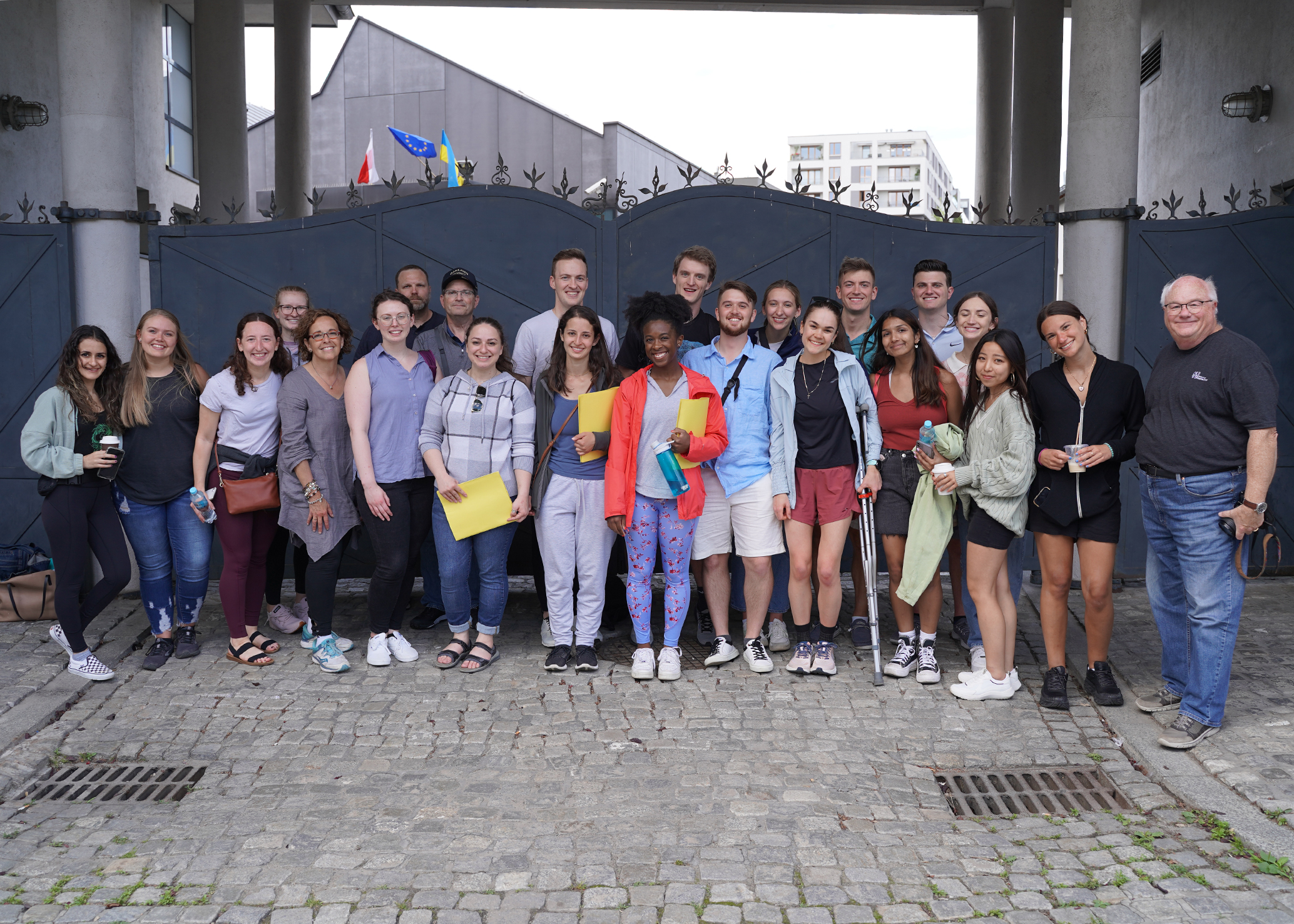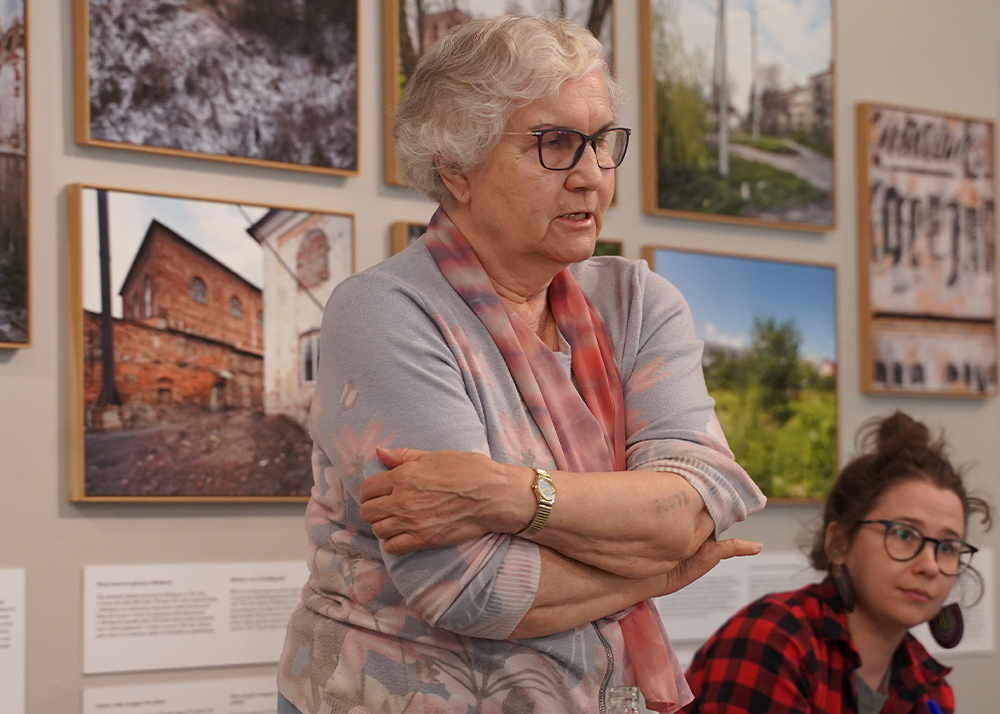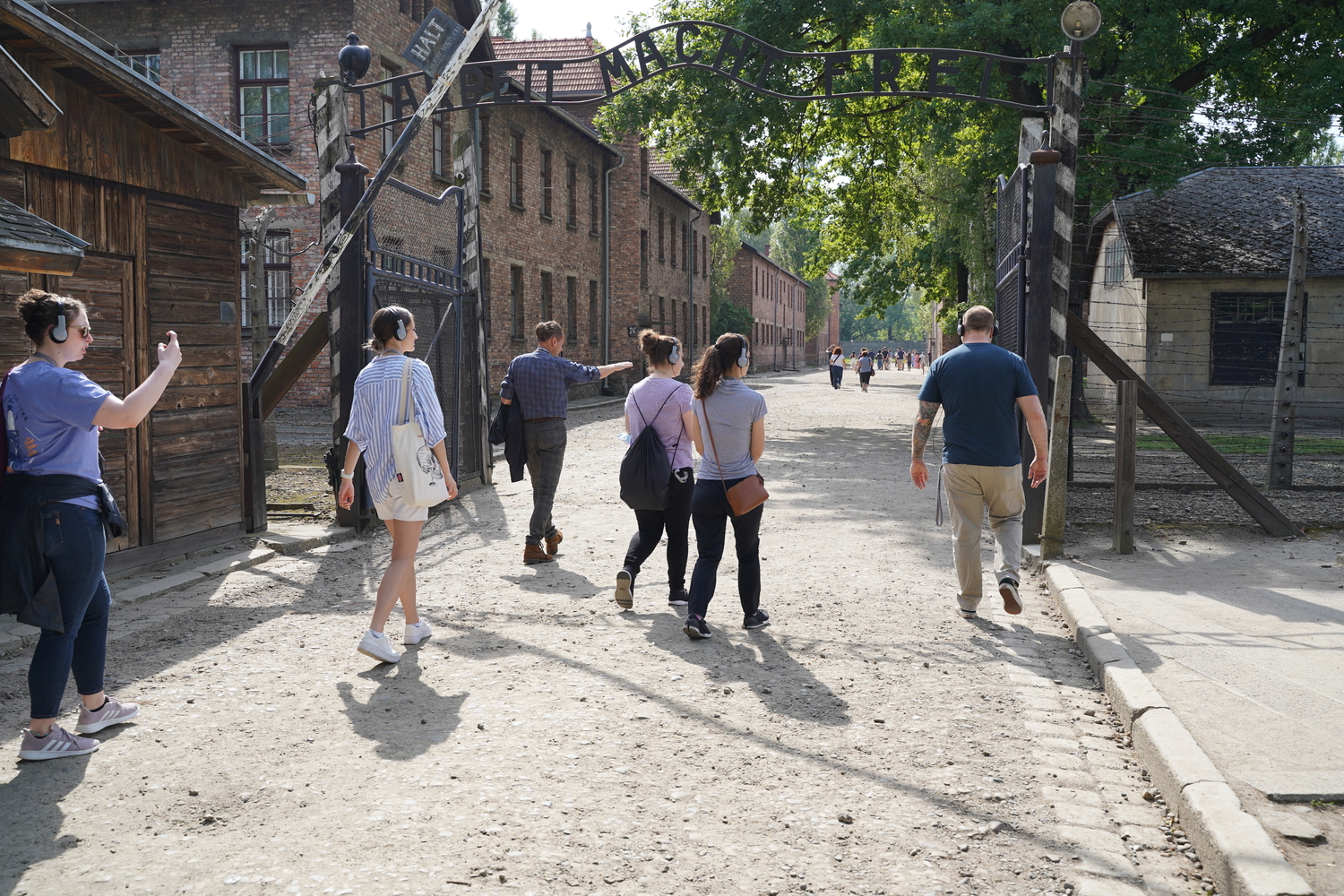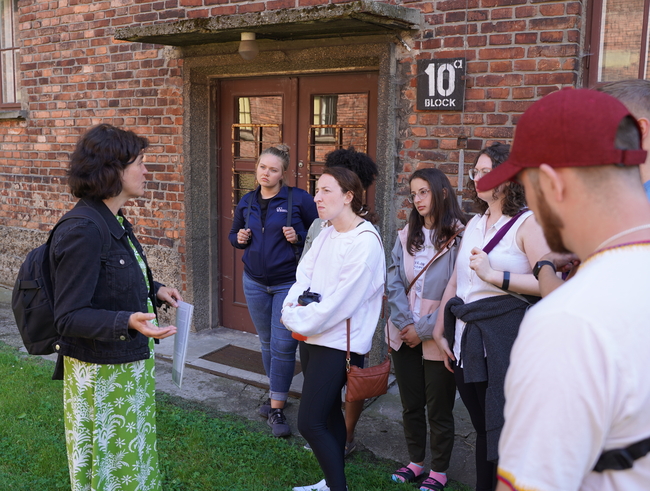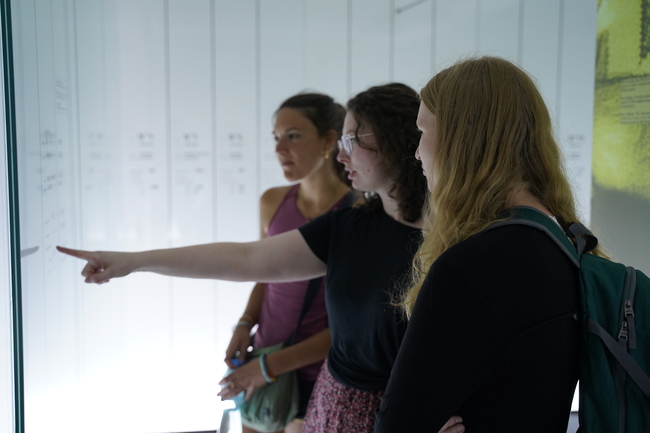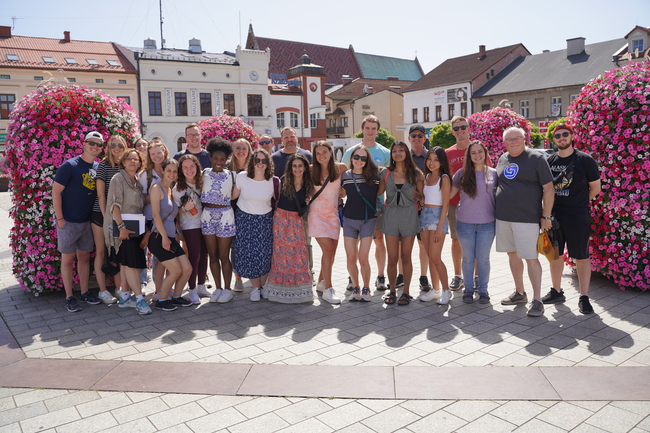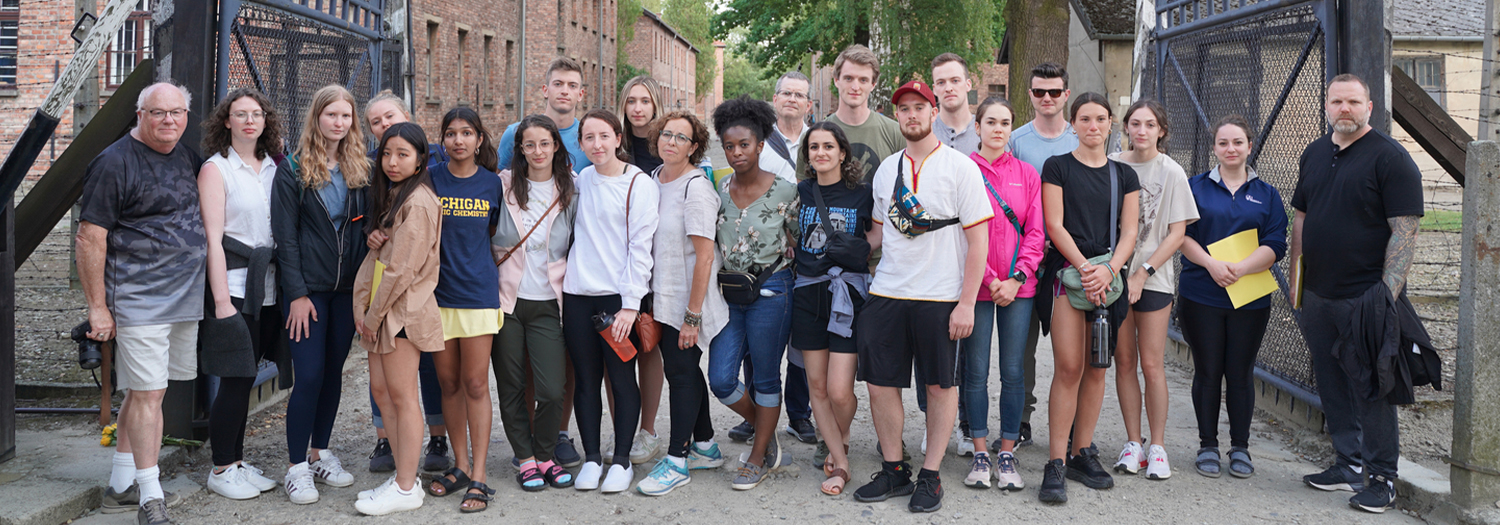
The Holocaust, Medicine, and Becoming a Physician: OUWB Study Trip to Auschwitz
In 2022, Oakland University William Beaumont School of Medicine began offering a new transformative learning opportunity to its medical students through the OUWB Holocaust and Medicine program.
Part of the program -- the OUWB Study Trip to Auschwitz -- is designed to prompt students to delve into this distinctive and tragic era in the history of medicine and critically reflect on its implications for one’s own personal and professional development within the medical profession.
The inaugural trip was June 13-20, 2022. The seven-day trip centered on guided tours in Krakow, Poland, as well as the sites of the former Auschwitz 1 and Auschwitz-Birkenau concentration camps. Special lectures, and interactive workshops also were part of the trip.
Here is a brief overview:
A seven-week seminar follows the OUWB Study Trip to Auschwitz, taken for credit as part of the Medical Humanities and Clinical Bioethics (MHCB) 3 course, in which students will discuss and reflect upon the trip experience, the relevance of this history to contemporary medicine, and develop projects to disseminate what they learned at a symposium dinner as well as to other community groups at OUWB, OU, and beyond.
OUWB invites you to learn more below about the experience, preparations, and program directors.
(Note: Photo at top of page is of the OUWB cohort that travelled to Poland for the Study Trip to Auschwitz in 2022.)
OUWB Study Trip to Auschwitz - 2023
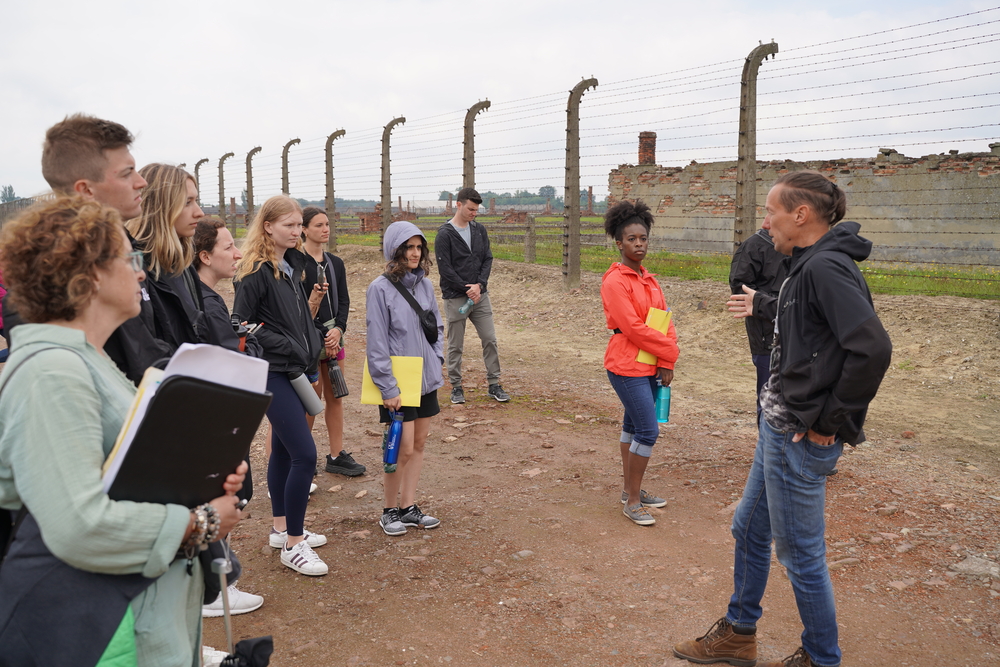
‘Once-in-a-lifetime learning opportunity:’ Medical students from OUWB head to Poland for Study Trip to Auschwitz
For the second time, a cohort of OUWB medical students is headed to Poland to study the Holocaust and medicine — and search for the meaning of humanism through a “once-in-a-lifetime” learning opportunity.
Daily Travel Log - 2023
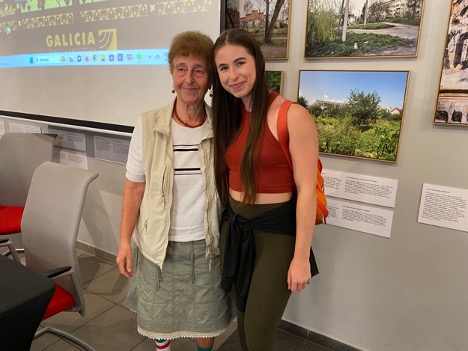 |
| Anna Janowska-Cioncka, a survivor, and Dylan Moran, M2 |
By Dylan Moran, MS2, and Jason Adam Wasserman, Ph.D.
After arriving in Krakow, Poland yesterday evening, we began the day with a tour of the Galicia Museum, which is located in the Kazimierz, the former Jewish quarter of Krakow. On the way, our tour guide shared the striking statistic that before the war, there were more than 60,000 religious Jews in Krakow, while today there are fewer than 200. This underscored not only the profound effect of the Holocaust on Jewish life in Poland, but its continued legacy today.
At the Galicia Museum we were treated to an exhibit that explored “Traces of Memory” and, through photographs, wrestled with the struggle to preserve this important history and the constant tension between remembering and moving forward. The exhibit further emphasized the point that the Holocaust was not just an attempt to murder people, but an attempt to annihilate a culture. It was difficult to take in that most of the photos were not of people, but of the little that remained of their existence.
Dr. Les Rocher looks at a photograph showing how Nazis used Jewish grave stones to pave walkways and in other construction projects. |
We also met with survivor, Anna Janowska-Cioncka, who shared her powerful story with us, giving a profoundly personal view of the atrocities from which few, even herself as a young child, were spared. This included the terrorization of her and her family in a small village called, Rabko, as well as the execution of many of her family by the Nazis.
Meeting Anna and hearing her story of survival, along with her sister and mother, gave me insight of how someone who carries the trauma of the Holocaust views the world. Anna’s final message for us to take away from her story and the discussion was to view everyone as equal, no matter their identity, religion, race, or background. I was not able to meet my four family members who were Holocaust survivors before they passed, so being able to hear Anna’s experiences and to shake her hand made me feel like I was channeling my own family. This powerful experience will remain with me.
Next we visited the Under the Eagle Pharmacy, which was a site of resistance, located in the Jewish Ghetto. There, Tadeusz Pankiewicz was the only non-Jewish person to remain in the Ghetto and he not only helped take care of patients, but also smuggled information and goods and helped people escape death and forced labor, and became an important witness to the crimes against humanity that happened in that place.
Under the Eagle Pharmacy |
The accounts of Tadeusz Pankiewiez allowed reflection of how one courageous person could have such an impact on the lives of others. Although he was one person, Pankeiwiez helped countless Jews by providing information from outside of the ghettos and assisting in their survival. Learning this history encourages the idea that we can be courageous as future physicians and need to always give our patients the care and advocacy they deserve, especially in times of injustice.
At the pharmacy, I read a poem dedicated to Tandeusz Pankiewicz and we reflected on the notion of self-sacrifice and helping others. It was incredibly powerful to stand in the spaces where both these atrocities and these acts of moral courage simultaneously took place.
(Daily entries will be filed every day from the 2023 OUWB Study Trip to Auschwitz. For the preview story of the trip, click here.)
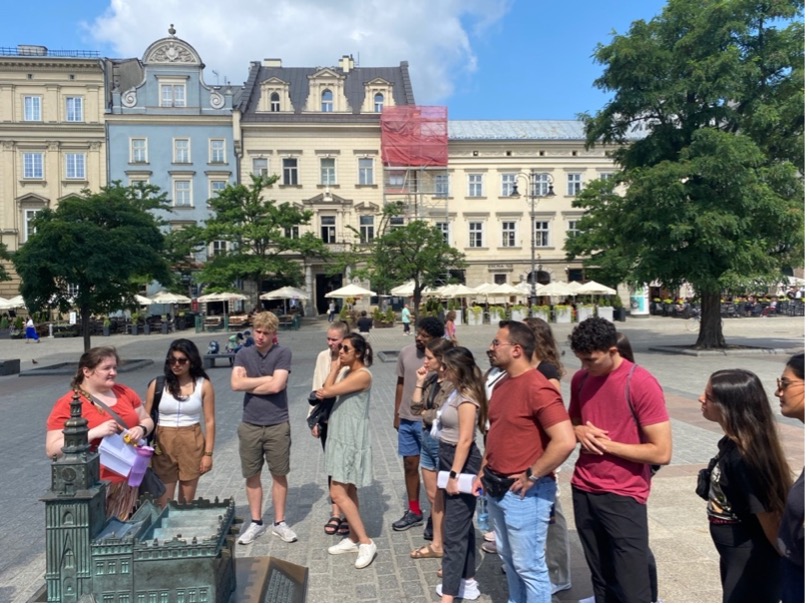 |
| Genevieve Richardson presents a reflection on the participation of physicians, nurses, and medical students in the White Brigade in Main Market Square, Krakow. |
By Joseph Solomon, MSII, and Jason Adam Wasserman, PhD
Today started with a walk through Main Market Square to Wawel Castle, with our tour guide describing some of the broader history of Krakow along the way.
Wawel Castle once occupied by the kings of Poland with a history of Polish cultured, preserved even through World War II. |
The reflection highlighted the role a medical student played in running from door to door, warning Jewish families of deportation. When some he tried to warn scoffed in disbelief, Harald Peterson remained persistent, convincing the families to come with him to Bispebjerg Hospital where doctors and nurses took care of them. Amongst numerous other stories exemplifying moral courage, this testimonial served to remind us that the weight of our actions is not only measured by their magnitude, but by the vigor and willingness to see them through.
The next stop was Jagiellonian University. Not only a significant cultural center for centuries before, but also a significant site of Nazi oppression just after the invasion of Poland The Sonderaktion Krakow was a Nazi action whereby they called a mandatory meeting of University Professors under the auspices of informing them about new teaching standards for their classrooms. But when the professors showed up to the meeting, they were rounded up and sent to concentration camps. While most were later released following a loud international outcry, several died in the camps. This also begs the question what larger international protest might have done to alter the early course of the Nazi program if deployed in response to their actions against other groups.
Kaitlyn Paez presents a reflection on Sonderaktion Krakau outside of the Jagiellonian University in Old Town, Krakow. |
In keeping with our focus not only on Nazi crimes, but also acts of resistance and moral courage, it is notable that following their release, many of the professors formed an underground university in defiance of Nazi law and continued to educate students, graduating nearly 1,000 students during wartime.
We left Krakow around noon and headed to Oswiecim, the location of Auschwitz-Birkenau. We first had a lecture on “Medical Crimes in Auschwitz” by Teresa Wontor-Cichy.
Teresa Wontor-Cichy lectures to our students on “Medical Crimes in Auschwitz.” |
The lecture encompassed many experiments carried out by Nazi physicians, including those by Josef Mengele. The concentration camps were the perfect place for his notorious experiments on twins, as he had access to whole families, sometimes with multiple generations. As with most of the physicians involved in the Holocaust, no punishment was ever given to Mengele after the war, and he took all of his records with him so a great deal about his atrocities remains unknown.
We then headed to the Jewish Museum and synagogue in Oswiecim, where we learned about pre-war Jewish life. Particularly striking, we learned that 60% of Oswiecim had been Jewish before the war and relations between Jews and other Poles in the town were quite good, with the Jewish community well integrated into social life and institutions. Today, there are no Jews living in Oswiecim and only 1 of the 25 synagogues remain intact; all the rest were destroyed during the Nazi occupation. As we walked through the remnants of the first Jewish cemetery in Oswiecim, we felt the wartime impact on the once prominent Jewish population. The juxtaposition of this previously vibrant and integrated city with the utter devastation wrought by Auschwitz helps bring the magnitude of the genocide into sharp relief.
Tomorrow, we start our day with a tour of Auschwitz I.
Entering the gas chamber and crematorium at Auschwitz I. |
By Sahana Shankar, MSII, and Jason Wasserman, Ph.D.
As emotionally intense as this trip has been already, as our first day at Auschwitz proper, today was especially heavy. Before walking into the camp of Auschwitz, we walked through a long hallway 5 minutes of names ringing through our ears. Though we were surrounded by our peers, not a word was spoken. In a voice of steadiness, but not monotone, it was a way for us to pay our respects as we walked to the camp. I internalized every name, knowing that it was someone’s wife, husband, mom, dad, brother, or sister. I would want someone to listen to my loved one’s name.
We then walked into a small theater in the camp where a short 10-minute film was played for us. There, I learned with something that really stuck with me; “most people who are in this camp were here for a shorter time than your visit today”. Watching the video fade in and out from black and white pictures of the victims to the color, but empty now, helped us try to process the confusion and terror of the prisoners a bit more.
Next, we arrived at the entrance to the “Main Camp”. A former army barracks, Auschwitz I was repurposed by the Nazi’s for unspeakably horrific uses. To enter the main camp, we had to pass through the date with the famous words “Arbeit Macht Frei”, a famous sentence that changed the word “truth” to “work”, reading “work will set you free”. This was used to keep prisoners calm and orderly as they entered the camp, but, of course, no matter how hard they worked, they would never be set free. In another cruel and unfathomable irony, an orchestra sometimes played as new entrants walked into camp, others were being murdered in a gas chamber less than 50 yards away.
After entering the gate in main camp, we not only saw barracks that sometimes housed up to 700 inmates in unbelievably crowded conditions, but other blocks that were used as “hospitals,” where physicians were known to deliver phenol injections to the heart of patients, an execution yard where an estimated 20,000 prisoners were shot, and the courtyard that held public hangings. Certainly, the theme of the camp centers around death.
At the entrance to Auschwitz I. |
The tour continued at Block 3. As I touched the original walls, I noticed the bright paints. It almost seemed as though irony was one of the goals of the Nazis. It was strange to see the colorful walls knowing the dark history that took place between them. The designs and patterns have grown faint over time, in some cases stained by Zyklon B which was used to disinfect clothing as well as to gas people in the gas chambers.
The entrance of Block 3. |
Block 3 contained bunk beds where prisoners would co-sleep. We learned that 2-3 people would often sleep on one level of the bunkbeds, often with only straw and sometimes no mattress at all. Conditions of the room were horrid.
Bunkbeds of Block 3. |
Yet we also heard stories of survival and self-sacrifice, like that of Maxmilian Kolbe, a Polish priest who offered himself in place of another prisoner who was going to be punished for an attempted escape. We saw the cell where Kolbe was held, along with other prisoners who were kept in standing cells that also served as the first sites of trials of Zyklon B as a killing method.
The hardest part of the day was when we arrived in the exhibition that showed belongings of individuals ranging from locks of hair, shoes, luggage, pots, and pans. I was not ready for the hair, and nothing could have prepared me for it. Locks of brown, black, and blonde blond hair piled together suggested another cruel irony of the camp where diverse people were murdered in the name of racism and ethnocentrism. Another poignant display had luggage with names written on them as well as what train car they arrived in, a final display of hopefulness that they would need to find their belongings later. But most of them were gassed and cremated within hours of arrival.
Bags of incoming prisoners with their names written on them. |
As difficult as this content was, particularly the personal items such as luggage and the shaved hair of the inmates, a parallel message to “never forget” compelled everyone in the group to nonetheless confront this dark history.
In the afternoon, we had another lecture by historian and Holocaust scholar Teresa Wontor-Cichy on Medical Experiments at Auschwitz. As a special treat, we finished the lecture in Block 10, the site of radiation experiments done on women. There, we heard a testimonial and reflection about Adelaide Hautval, a physician and prisoner who cared for women there. It was nice to end such a dark day with the story of a physician who demonstrated such moral courage.
In the hallway between two “clinic rooms” in Block 10 where experiments were performed. |
Near the end of the tour, we were able to pay our respects to those who were accounted for in the book records.
Looking through the lists of victims of the Holocaust. |
In the evening, we convened to do some reflective writing and shared thought about the day with each other. Our discussion centered on struggling with the juxtaposition of such evil in the midst of a profession that is supposed to be built on an ethic of caring, along with the notion of moral courage and bravery, and thinking about how desperately it is needed in the profession.
Maame Obeng, reflecting on the moral courage of Dr. Adelaide Hautval. |
By Kellan Martin, MSII, and Jason Adam Wasserman, Ph.D.
| Summer in Birkenau, 2023 by Kellan Martin |
What sweet revenge for such a cruel place |
Today was another emotionally intensive day, as we started at the Jewish loading ramp just outside of Birkenau. Memorial stones and even a lit candle had been placed around it and it was difficult to imagine that for so many, that place was the beginning of the end.
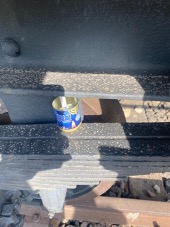 |
As we entered Birkenau, it is impossible to not notice how different it is from Auschwitz I. We learned that the grounds of the camp, which are now lined with bright green grass, were once filled with mud. At times, prisoners would desperately drink the muddy water, only to become extremely sick. The barracks were designed originally to house horses, and the exposure to the elements must have been severe. The camp is huge and housed dozens of barracks, as well as multiple crematoria.
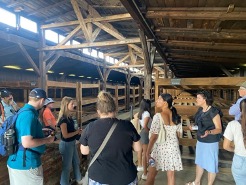 |
As we went, we heard stories both of death and tragedy, but also of hope, resilience, and resistance.
The ruins of one gas chamber sit towards the back of the camp. Next to it is a field where bodies were burned prior to the building of the crematoria. This is important because it is a site where a prisoner, risking their own life, took the only known photographs of the Nazi mass murder, and smuggled them in a pot with a false bottom to the outside world.
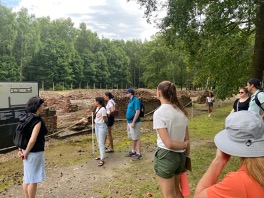 |
In “Canada,” a section of the camp used to collect, sort, and distribute confiscated household goods, Dr. Hedy Wald shared a story about her father, who was imprisoned in Birkenau and worked in the “Canada” sector of the camp. It was a moving moment, which brought to life both the tragedies and triumphs of a survivor.
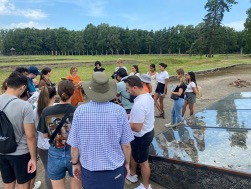 |
Later in the day we had lecture on the euthanasia program at Auschwitz by historian Piotr Setkiewicz, which differed in important ways from the T4 program in Germany. Following dinner, we had our second of three reflective writing sessions where we decompressed, wrote about our experiences and insights, and shared thoughts for the day with each other.
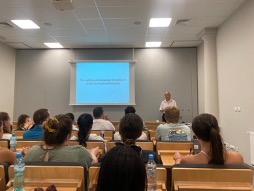
Why am I here? - Krzysztof Antoncyk |
By Kaitlyn Paez, MSII, and Jason Adam Wasserman, PhD
Today was our final day on the trip and we depart early tomorrow morning.
The day began with a lecture from Krzysztof Antoncyk entitled “Why Am I Here?” Krzysztof is a historian and director of digital repositories at Auschwitz. More importantly, he was our guide and mentor throughout this entire experience, leading our tours, helping organize our visit, coordinating resources in the library for our project explorations, and answering our many, many questions. It was a moving presentation centered around his own reflections about his work and why he does it. He focused on his sense of obligation to participate in sharing this history, but also on the positive relationships and connections he’s made with others who have that same commitment. He concluded by showing this drawing he made depicting how the ugliest roots of humanity culminated in the Holocaust, but that it was our duty to ensure that what grew from it now, and into the future, was good and full of life.
This was a great way to start the homestretch of our journey, where we shifted focus toward reflecting on what we would take away from the experience and what we planned to do with our new knowledge and insight.
We then held a discussion session on the contemporary relevance of the Holocaust, where each of us reflected on how we thought this experience would affect us in the future, particularly in our careers as physicians. And we carried these thoughts with us to the Auschwitz library and archives where we began to plan our dissemination projects. Through these projects we will share what we have learned with our classmates and the broader community. The head librarian pulled books and journals focused on medicine and the Holocaust and we brainstormed with each other and the faculty.
Next, we went back to Auschwitz I, the “Main Camp,” to view the special pavilions, exhibits sponsored by different countries that focus on the experiences of people who were deported from those places.
Room in Block 20, one of the hospital blocks, where prisoners were murdered by physicians with phenol injections to the heart. |
Polish exhibition in Block 15, where prisoners are depicted marching together with their heads down. |
To conclude the day, we had our last reflective writing session to capture our final thoughts on what we were taking away from the trip and we said our goodbyes to the people who were leaving separately from the main group.
It has been such a weighty and complex experience that it is hard to put it into words and even harder to “tie it up with a bow,” but we are all excited for the weeks and months to come, when we’ve had time to process and reflect, and point our efforts toward using this experience to be better physicians and to educate our community.
As we wrap up our experience educating ourselves about the Holocaust, I am filled with light rather than darkness. I am overwhelmed with a feeling of gratitude for where I am sitting and who I am surrounded by. What I recognized today is how deeply knowledge is tied to responsibility. To see what I have seen and to hear the stories that have been bravely told is such a privilege. After spending a week with my classmates, I am extremely hopeful about how we will use the knowledge we acquired throughout this experience to not only be better doctors but better humans.
OUWB Study Trip to Auschwitz - 2022
Second-year OUWB medical students who traveled to Poland last year to study the Holocaust and medicine continue spreading word about lessons learned to the community at-large. |
When the largest national conference in the U.S. for bioethics and humanities occurred in late October, Oakland University William Beaumont School of Medicine was well-represented. |
Students and officials from OUWB recently gathered with donors to reflect on their June trip to Poland — part of the school’s Holocaust and Medicine program — and looked ahead to what’s next. |
Nineteen next generation physicians from Oakland University William Beaumont School of Medicine spent last week in Poland for better understanding of the Holocaust — and gained deeper appreciation for human kindness. |
Nineteen students from Oakland University William Beaumont School of Medicine spent the first part of the week in Krakow, Poland, preparing for a visit to a World War II concentration camp as part of the school’s Holocaust and Medicine program. |
When Vern Pixley talks about “the most impactful” occurrences in his life, he points to two events: the birth of his children and visiting a concentration camp in Germany. |
To gain better understanding and appreciation of where she’s come from — as well as where she is going —Jessica Krone is about to travel 4,500 miles from Michigan. |
Nearly two dozen OUWB medical students traveling soon to Poland as part of the OUWB Study Trip to Auschwitz recently toured The Zekelman Holocaust Center in Farmington Hills. |
Day 1 - June 14
For the students on the OUWB Study Trip to Auschwitz, there was just about enough time to drop luggage at the hotel in Krakow, Poland, before setting out for the first tours of the week. The day largely was about helping students understand the rich heritage of Jewish people in Poland, and in Krakow specifically. "It's nice to start with a tour of Krakow that's especially focused on what pre-war Jewish life was like," said Jason Wasserman, Ph.D., associate professor, Department of Foundational Medical Studies, and co-director of OUWB's Holocaust and Medicine program. "It sets the context for just how much was wiped out and how much devastation the Holocaust represents," he said. In short, the students' first day in Poland set the stage for the brunt of the week, which will center on time spent at Auschwitz-Birkenau concentration camp. Among other things, students will tour the grounds and critically reflect on the camp's implications for one’s own personal and professional development within the medical profession. Local tour guide, Aleksandra Kowalczyk, led students through Krakow's Jewish Quarter, helping them understand the rich cultural heritage as they explored historic sites. (See map below for more detail on sites visited.) One of the first stops was Remuh Synagogue (Synagoga Remuh). A small Renaissance synagogue (circa 1557), it is named after the famous writer and philosopher Moses Isserles (aka Rabbi Remu'h) and still holds regular services for the small Jewish community in the city. Students also visited the adjacent Remah Cemetery, sometimes called The Old Jewish Cemetery of Krakow. Established in the years 1535–1551, and one of the oldest existing Jewish cemeteries in Poland. The last stop of the day was a tour at the Oskar Schindler Factory, which houses a permanent exhibition entitled "Kraków under Nazi Occupation 1939-1945." It showcases both individual and collective dimensions of the monstrosities World War II brought upon Polish citizens who were fed Nazi propaganda, the Jews who were forced to live in a ghetto, and the victims of the war terror. Duane Mezwa, M.D., Stephan Sharf Dean, OUWB, called the day "perfect." "Everyone is getting the background of what happened here leading up to the Holocaust," he said. "Instead of going straight to Auschwitz and diving right in, this is really a great start."
| ||||
Day 2 - June 15
On Wednesday, an 82-year-old Polish woman helped 19 OUWB students further understand the harsh realities of the Holocaust — and that the future physicians can play a big role in making sure it never happens again. Lidia Maksymowicz shared her harrowing tale of surviving the Holocaust as part of the students’ visit to Galicia Jewish Museum in Krakow. The museum visit and appearance by Maksymowicz kicked off the second day of the trip dedicated to preparing students for the rest of the week, which will be spent touring and studying Auschwitz as part of OUWB’s Holocaust and medicine program. Students also visited several other sites significant to Polish heritage — the Eagle Pharmacy, Ghetto Heroes Square, the main square of the Old Town of Krakow, Jagiellonian University Museum Collegium Maius, and Wawel Cathedral. “Everything’s been a ramp up to the study that will be done at Auschwitz,” said Jason Wasserman, Ph.D., associate professor, Department of Foundational Medical Studies, and co-director of OUWB's Holocaust and Medicine program. Specifically, he said “a little bit about Jewish history in Poland, and Polish history.” “The first two days have set the stage for the central experience (of the study trip to Auschwitz),” he said. Hedy Wald, Ph.D., clinical professor of Family Medicine at the Warren Alpert Medical School of Brown University, and co-director of OUWB’s Holocaust and Medicine program, echoed Wasserman’s thoughts. “Students have mentioned that they are grateful for this time in Krakow because it’s preparing them emotionally (for Auschwitz) …I’m struck by that,” she said. For many, the most emotional part of the day was hearing Maksymowicz recount her story of being taken to Auschwitz as a 3-year-old. Through an interpreter, Maksymowicz explained in great detail what it she remembered: being snuck food by her mother; bunks crawling with insects; dirty blankets; overcrowding; and death all around her. She recalled just the day before, June 14, when she attended an event at Auschwitz to remember the anniversary of the first transport of Poles to Auschwitz. “I spoke to other prisoners who survived and…it’s like you never the camp and the camp is still inside of us,” she said. Maksymowicz told the future physicians that she shares her story with younger people like them whenever possible. “It’s my mission to tell my story…about Auschwitz and about World War II,” she said, noting the responsibilities of today’s younger generation to not let history repeat. Later in the evening, after a traditional Polish meal that saw costumed Polish dancers, singers, and musicians entertain everyone, those on the OUWB Study Trip to Auschwitz boarded a bus and made a 90-minute trek to the Center for Dialogue and Prayer. The center is a 10-minute walk from Auschwitz. That’s where the third day of the study trip will begin.
| ||||
Day 3 - June 16
Visiting the former concentration camp known as Auschwitz 1 clearly had a big impact on the contingency from OUWB in Poland this week as part of the school’s Holocaust and medicine program. The group spent several hours at the former concentration camp known as Auschwitz 1. Among other things, the tour provided a new view of the atrocities that happened along with insight into the resiliency of those who survived. Also on the third day of OUWB’s Study Trip to Auschwitz, participants heard a lecture entitled “Medicine in Auschwitz” that was presented by Teresa Wontor-Cichy, Ph.D., from the Auschwitz Department Research Center. The day wrapped for the group with a reflective writing session that opened the door for students and administrators to openly discuss how the visit to Auschwitz 1 earlier in the day impacted them. Hedy Wald, Ph.D., led the session that essentially centered on two topics: what students took away from the visit to Auschwitz 1; and how they think “healers become killers.” “What struck me the most…was the area with the pictures of faces (of prisoners), and not just children but the adults as well…and seeing the fear in their eyes,” said one student (identities aren’t being disclosed for this update because comments were made in a private session.) Another student said she was impacted by a film-based exhibition that showed Jewish children and their families happily playing before World War II. “It made me think more deeply about how much they tried to dehumanize them…shaving everyone’s hair and putting them in the prison uniforms,” she said. “It just…retrospectively hit me when I saw the humanity that was taken from them.” Another student said the visit prompted him to realized “just how morally flawed you have to be to know exactly how bad your doing (to other people), but you’re still going to do it anyway.” Seeing part of an exhibit that had hundreds of shoes from children who were taken to Auschwitz displayed “a different level of evil,” said another student. As part of a reflective writing exercise, students and other OUWB officials were asked to briefly write about “how healers become killers.” One student pointed to a lack of empathy in people who make such choices. “You have to have empathy to be able to relate to someone…if you don’t identify with someone who is dissimilar to you, you can’t empathize with them,” he said. The group also discussed several other angles of the question, including the aspect of choice and moral courage and grounding, as well as the differences between those who helped people who were suffering and those who caused it. One student also brought up the importance of “learning how to love and accept that people are different because the natural human tendencies is to care for and be more empathetic towards people who are like themselves…it’s a survival instinct.” She added that “compassion is completely teachable…on every level.”
| ||||
Day 4 - June 17
Oakland University William Beaumont School of Medicine students studying the Holocaust and medicine continued their in-depth work in Poland on Friday. The 19 students spent about five hours exploring the massive Auschwitz-Birkenau concentration camp — a day after spending about the same amount of time at the camp known as Auschwitz I. From the Death Gate rail entrance to the ruins of crematoriums and more, students took an in-depth look at the largest of the more than 40 camps and sub-camps that made up the Auschwitz complex. It opened as a branch of Auschwitz in March 1942. About 1.5 million people were killed at the camp. More than nine in 10 were Jews. Throughout the week, including at Auschwitz-Birkenau, students read testimonials at selected tour stops. Testimonials ranged from Jewish ghetto physicians involved in the Jewish medical resistance and victims of Nazi medical experiments to Nazi physicians. Hedy Wald, Ph.D.,clinical professor of Family Medicine at the Warren Alpert Medical School of Brown University, and co-director of OUWB’s Holocaust and Medicine program, said the testimonials are a key component of teaching about the Holocaust. She said they serve as a kind of springboard for grappling with core questions of being/becoming a physician and being a human being. At one of the tour stops at Auschwitz-Birkenau, Wald shared the story of how her father survived the camp -- and was housed at the same exact spot of the reading. Several students were in tears. "I was struck by how many students thanked me for sharing the story of my father's suffering in Auschwitz-Birkenau and the murder of his entire family in Auschwitz and Treblinka," she said. "It is a story that includes selections at the unloading ramp, done mostly by SS physicians, for forced hard labor, experimentation, or immediate death in the gas chamber. And it is a remarkable story of survival and resilience. I told them he would be so proud of all of them." It was the kind of experience that had students like Quinn Simpson thinking deeply about their visits to the camps. “I’m blown away that people were able to do something like this on this level,” he said. “(Auschwitz-Birkenau) was just massive…the same thing as Auschwitz I just on an astronomically larger scale.” Concurrently, Simpson said he felt “encouraged” by the stories of doctors and nurses who risked their own lives to help others. “It was really encouraging…even if there was a solid chance of death, they were still able to rise above that,” he said. “Even in arguably humanity’s darkest hour, people were still able to stand up to such an industrialized organization of hate and still show their morals and ethics.” Later on Friday, the students returned to Auschwitz I to visit Block 10. Normally closed to the public, the students were given special access to the cellblock where mostly women were used as experimental subjects for German doctors. Experiments ranged from testing bodily reactions to various substances to sterilization. Teresa Wontor-Cichy, Ph.D., from the Auschwitz Department Research Center, led the tour. She said it’s important for people — especially future physicians — to learn from the past, especially as we see an increase in the number of factors similar to what led up to the Holocaust. “The issues are still contemporary, they are still important,” she said. “We still have so much crime, we still have war, and we still have people in need.”
| ||||
Day 5 - June 18
Saturday represented a pivot for the OUWB medical students studying the Holocaust and medicine in Poland this week. Specifically, a pivot toward reflection on what students have seen while visiting Krakow, Auschwitz I, and Auschwitz-Birkenau, what it means to them, and eventually, how they can deliver the messages to others who might learn similarly. The day started with a lecture from Pietr Setkiewicz, Ph.D., director of the Centre for Research at Auschwitz-Birkenau State Museum, on the topic of the euthanasia campaign for patients of the Auschwitz hospital and the role of Auschwitz doctors. It was held at the Auschwitz Education Center, which is located on the other side of the Auschwitz I wall. The next event for students was discussion of contemporary relevance with regard to what they have been seeing and learning this week. The day concluded with the second reflection writing session of the week. Students were asked to reflect on the stories of resistance and resilience that they’ve heard throughout the week and describe how it resonated and/or inspired them. Doing these types of activities in the later part of the trip is by design, said Jason Wasserman, Ph.D., associate professor, Department of Foundational Medical Studies, and co-director of OUWB's Holocaust and Medicine program. “The reflection stuff is back-loaded and the experiential stuff is front-loaded and that’s on purpose,” said Wasserman. “We want students to have the prep work, the immersive experience of being in the camps, and then the heavy reflection.” Wasserman said that the students are doing “really good…they have had some really nice observations.” “More importantly, I think that they’re struggling with the right questions and they seem to really be thinking about this,” he said. “Students have been coming up to me while we’re walking and been saying, ‘You know I’ve been thinking about this…I’ve been thinking about that…or this really struck me.'” David Grey, M.D., a Beaumont ophthalmologist and assistant professor, Department of Ophthalmology, OUWB, is a donor for the trip and also taking part. He said hearing what students are thinking about shows him that the trip is worth the time and money being put into it. “The thoughts that are coming out, the things that they’re saying, and the ideas that they’re wrestling with…I’m so impressed,” he said. “We’re happy to have a small part of this.” Also on Saturday, and for the last time during the trip, the OUWB contingency visited part of Auschwitz I. They were able to explore cellblocks that have been converted into special exhibits honoring those from countries particularly impacted by the Nazi genocide: Israel, Netherlands, Belgium, France, Hungary, Austria, Czechoslovakia, and others.
| ||||
Day 6 - June 19
“We’re all going to be better doctors because of having had this experience.” So said one of the 19 students from OUWB who have been in Poland this week as part of the school’s Holocaust and Medicine program. The statement came during the week’s final reflective writing session, during which students were essentially asked to reflect on and discuss “echoes of the Holocaust” in contemporary medical practice. Students generally commented on the need to be aware of differences, the importance of patience, respecting the power that physicians possess, treating others with respect, and more. As the session came to a close and everyone was looking ahead to what comes next, advice was given by Hedy Wald, Ph.D., clinical professor of Family Medicine at the Warren Alpert Medical School of Brown University, and co-director of OUWB’s Holocaust and Medicine program, “I’ve said this to many of you on this trip…stay open to transformative opportunities in your career…in your life,” she said. “You just will never believe the things that will happen. Don’t walk through the door…run through the door.” Wald thanked supporters like Oakland University President Ora Hirsch Pescovitz, M.D.,; David Grey, M.D., a Beaumont ophthalmologist and assistant professor, Department of Ophthalmology, OUWB, who took part in the trip; and the many other donors who made it possible. Jason Wasserman, Ph.D., associate professor, Department of Foundational Medical Studies, and co-director of OUWB's Holocaust and Medicine program, thanked Duane Mezwa, M.D., Stephan Sharf Dean, OUWB. “This doesn’t happen without Dean Mezwa’s leadership,” he said. Mezwa gave credit to the students for their commitment to the program. “You are the right people to be in our school. You are the right people to be OUWB grads,” he said. “I’m extremely proud of you. Whether you know it or not, I learned a lot and it’s going to help me be a better leader.” The reflective writing session wasn’t the day’s only activity. In the afternoon, students toured Oswiecim, the town located near the Auschwitz concentration camps. Through a tour provided by the Auschwitz Jewish Center, they learned about the history of Jewish people in the community and the impact of the Holocaust. The day began with a workshop for the students to discuss the various projects that will come from OUWB’s Study Trip to Auschwitz. Krzysztof Antonczyk, Ph.D., director of Auschwitz’s digital repository, led the session. Of note, the workshop was held in the Auschwitz Study Center, which is adjacent to Auschwitz I concentration camp. Center officials said the OUWB workshop was the first time anyone had used the center’s new library in such a manner. The building has a long history, and once was used to store Zyklon B, the toxic gas used by Nazis to kill people in gas chambers. Wald said she was encouraged by what students are thinking about for projects. Specifically, she said, with regard to people the students have learned about who stood up to the Nazi regime, one way or another. “Students are talking about how it impacted them, why these people did these things, how they found their voices, how they found their moral courage,” she said. “I can’t imagine that there’s any way that this is not going to help somebody in the future.”
| ||||
The first video below features a photo slideshow from the 2022 OUWB Study Trip to Auschwitz.
On May 18, 2022, a special send-off dinner was held that connected students with some of the donors that made the OUWB Study Trip to Auschwitz possible. The video below is a photo slideshow from the event.
OUWB Holocaust and Medicine
Study Trip to Auschwitz - Program Directors
The program co-directors are Jason Wasserman, Ph.D., professor, Department of Foundational Medical Studies, and Hedy Wald, Ph.D., clinical professor of Family Medicine at the Warren Alpert Medical School of Brown University; faculty at the Harvard Medical School Pediatrics Leadership Program; and member of the Lancet Commission on Medicine and the Holocaust. More about the co-directors can be found below.
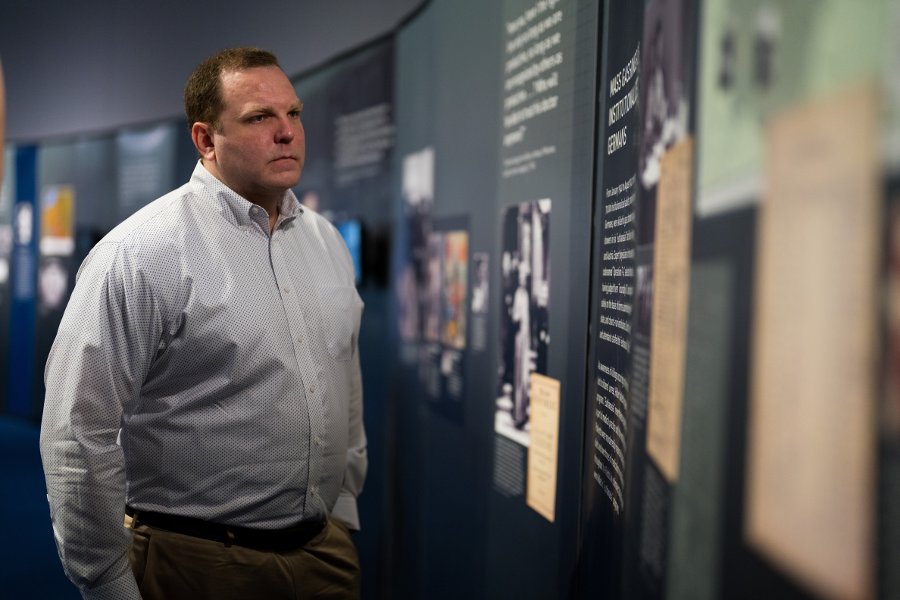 Social issues have always been important to Wasserman, co-director, OUWB Holocaust and Medicine program
Social issues have always been important to Wasserman, co-director, OUWB Holocaust and Medicine program
Jason Wasserman, Ph.D., can now add one more item to an already impressive CV — co-director of OUWB’s Holocaust and Medicine program.
The program includes a first-of-its-kind trip for a U.S.-based medical school.
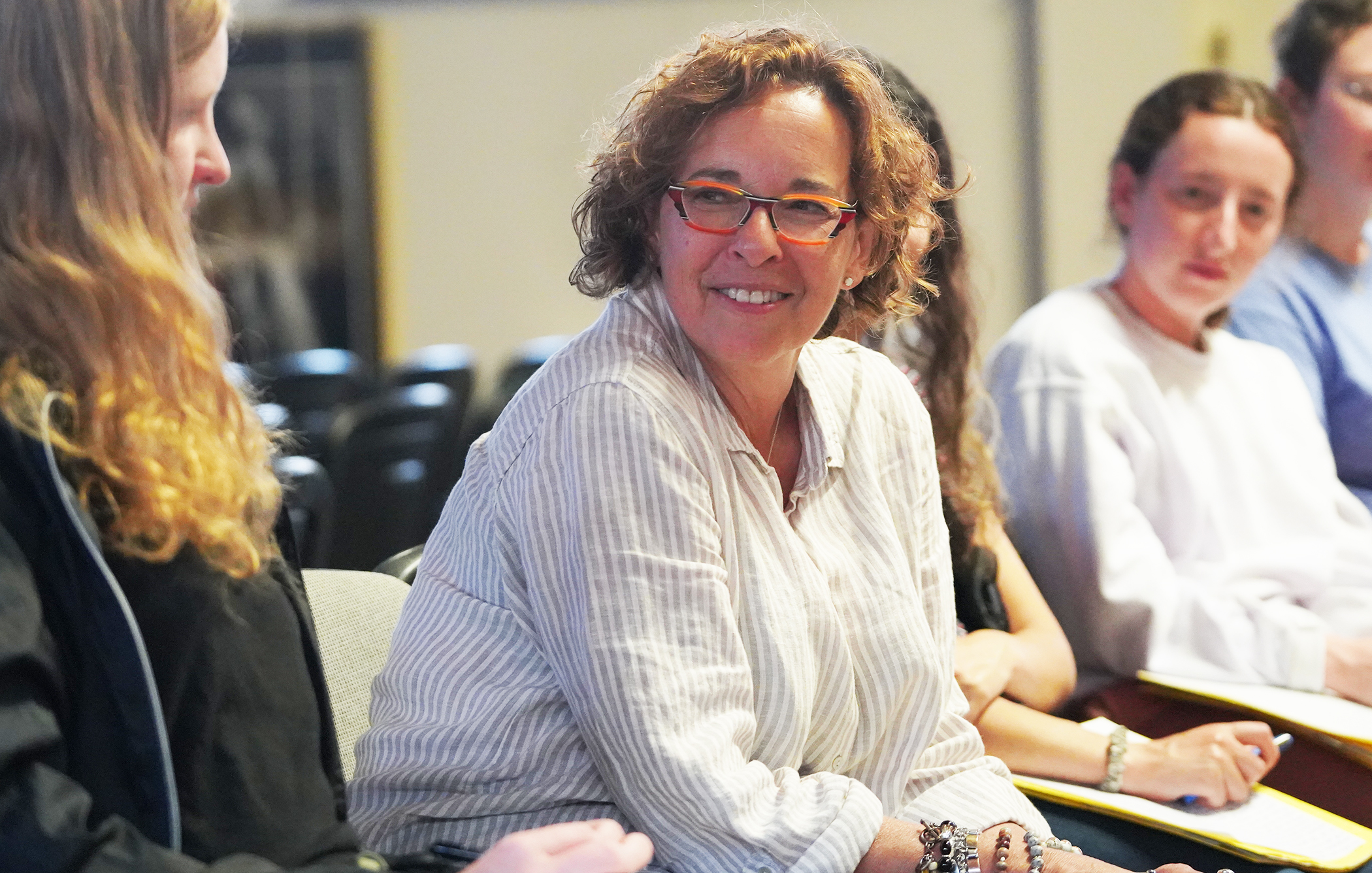 Co-director of OUWB Holocaust and Medicine program from Brown University specializes in reflection, identity formation
Co-director of OUWB Holocaust and Medicine program from Brown University specializes in reflection, identity formation
Hedy Wald, Ph.D., serves as a member of the Lancet Commission on Medicine and the Holocaust — and is co-director of OUWB’s Holocaust and Medicine program.
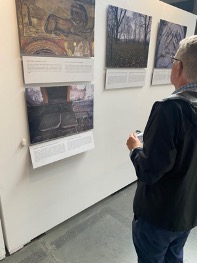
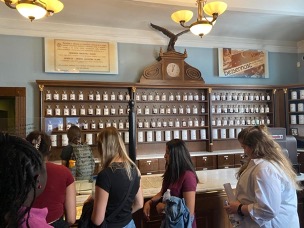
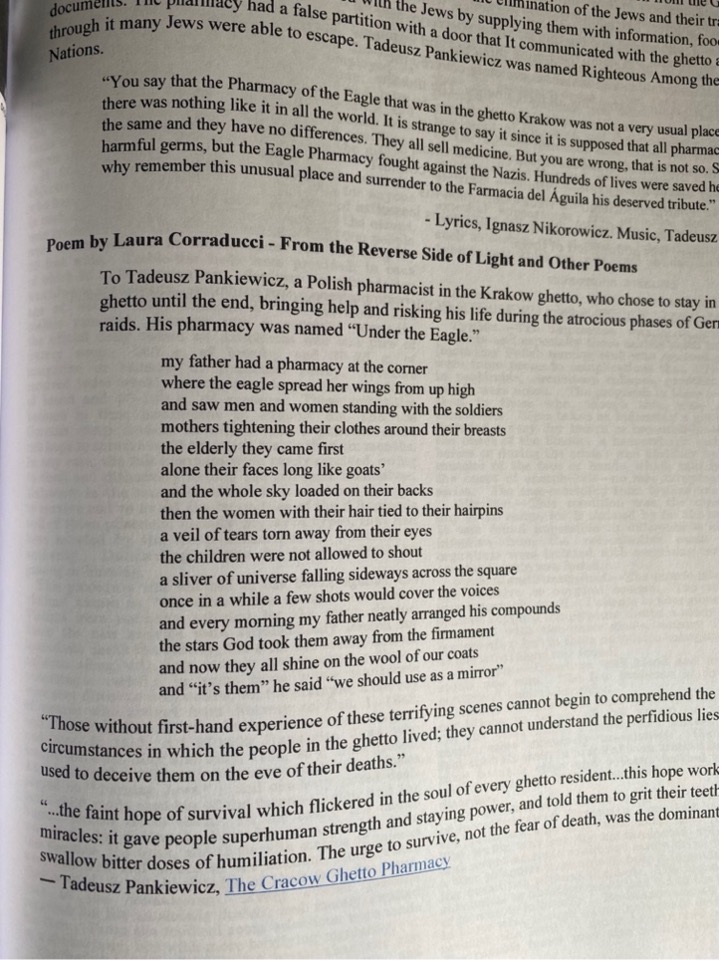
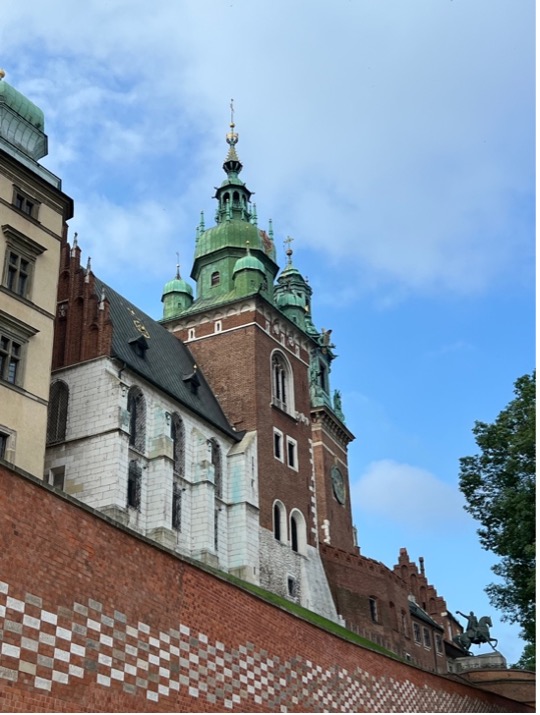
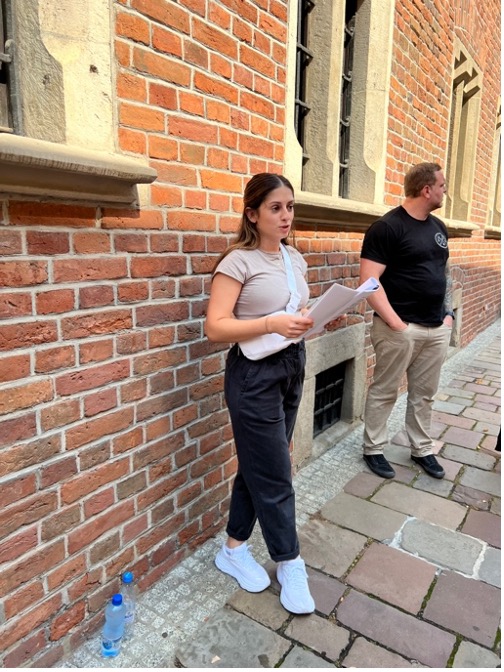
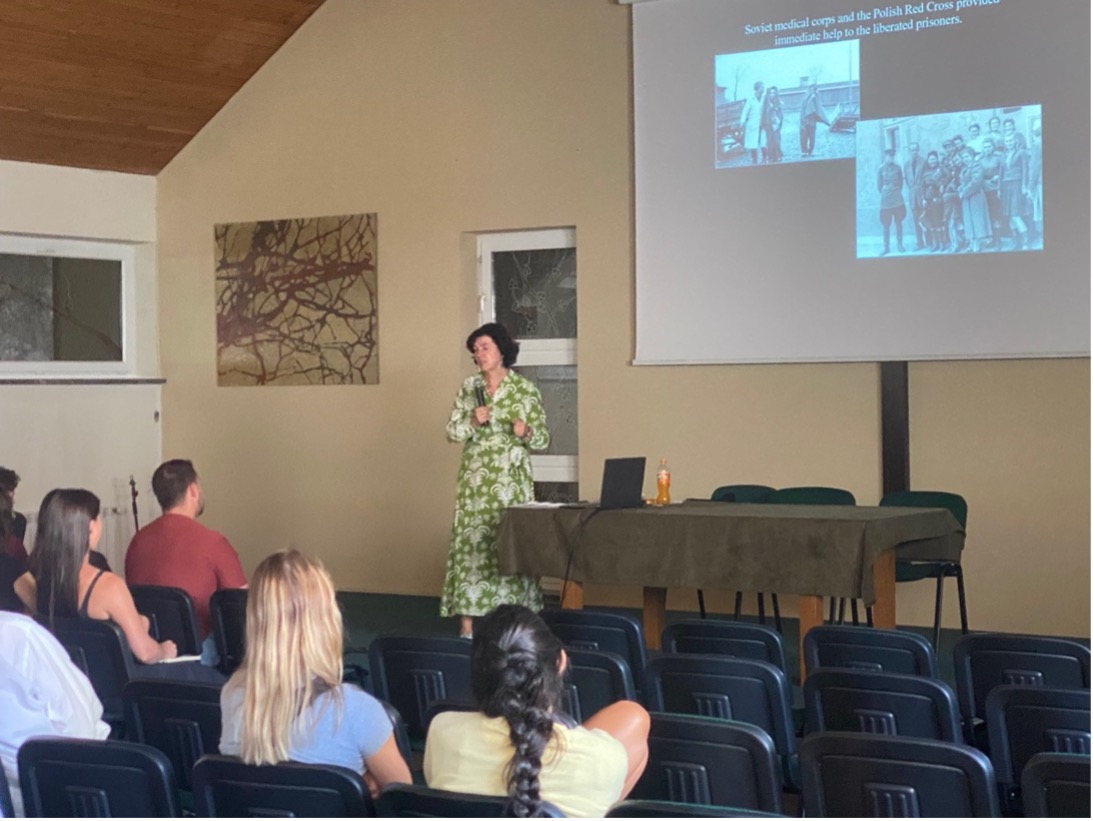
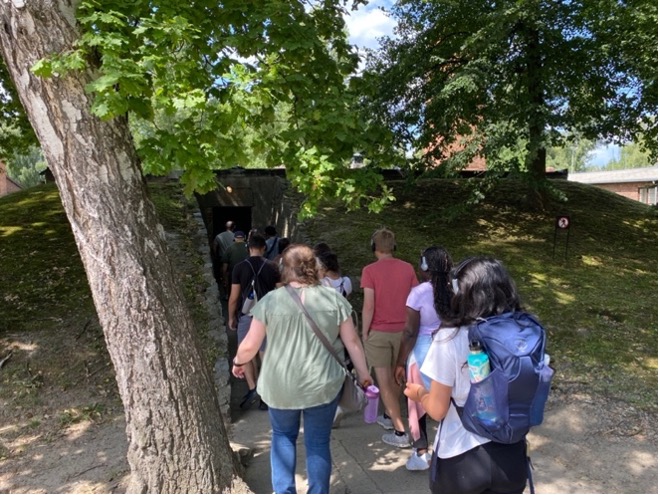
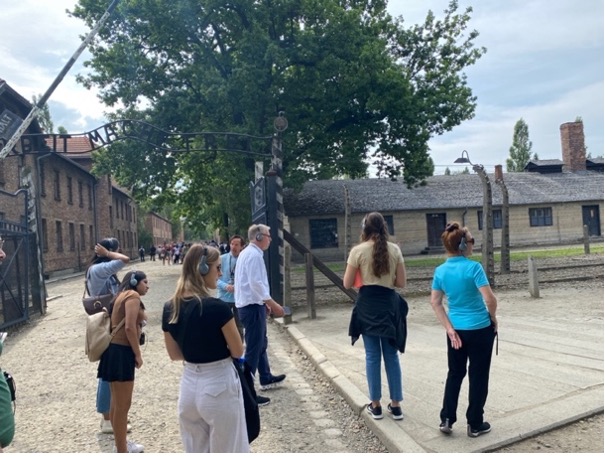
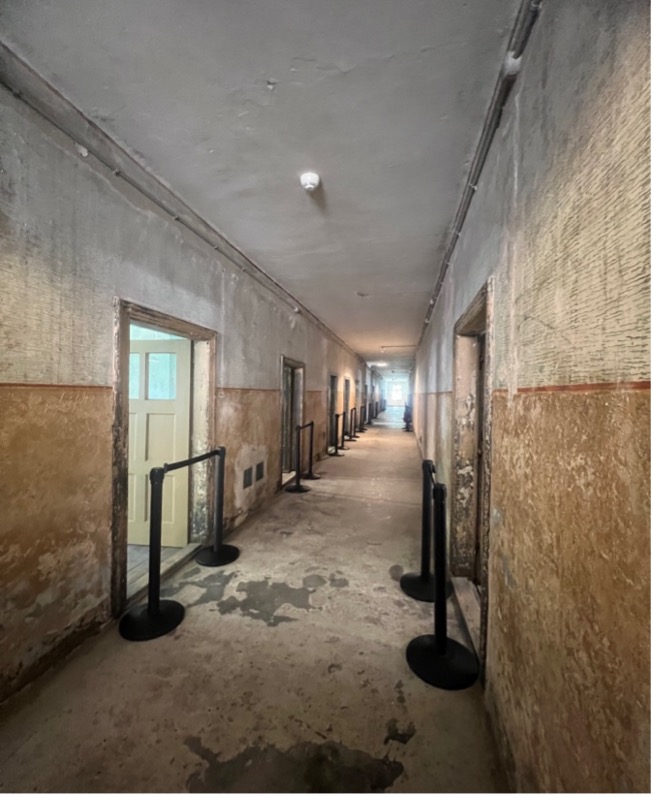
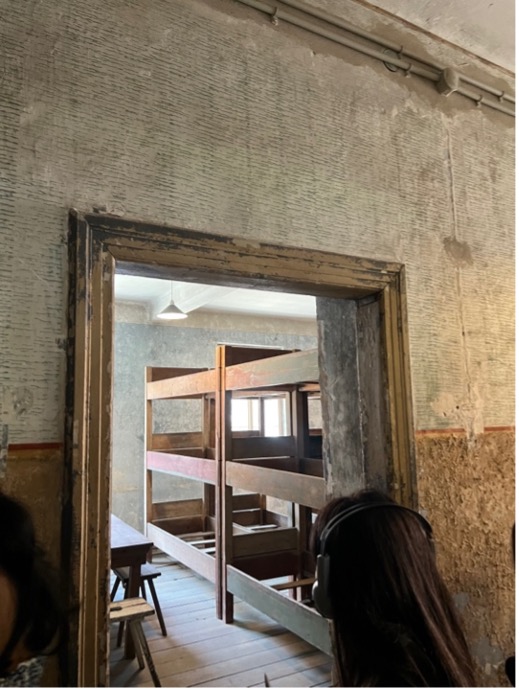
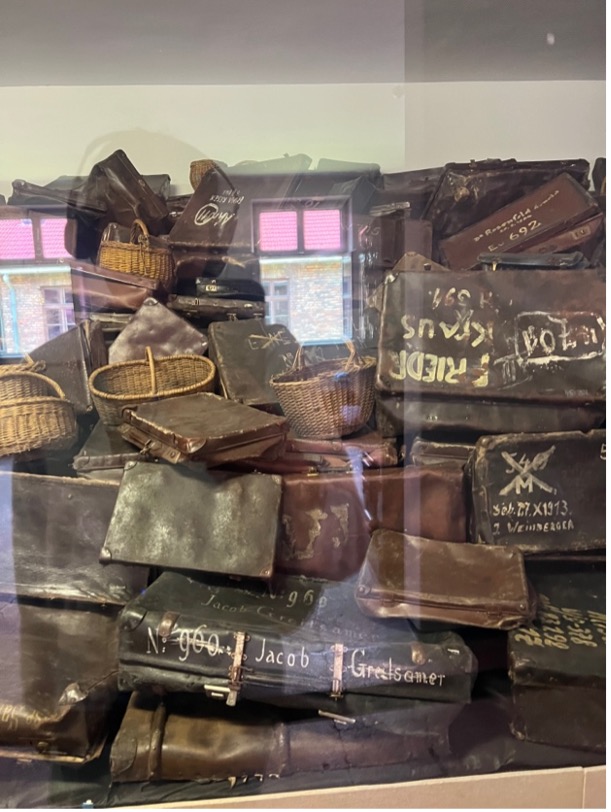
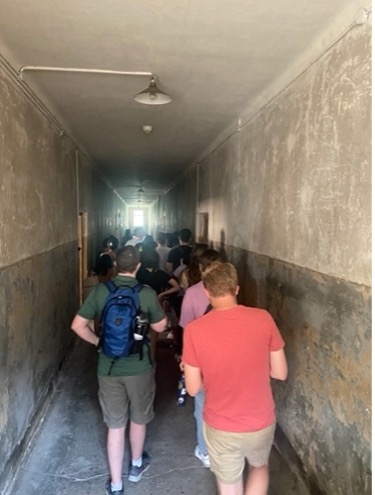
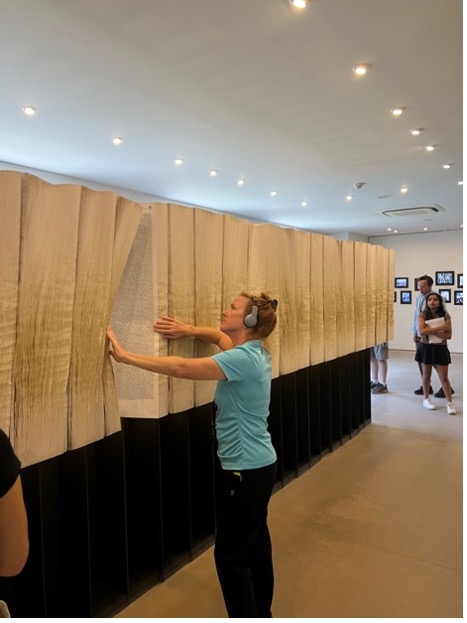
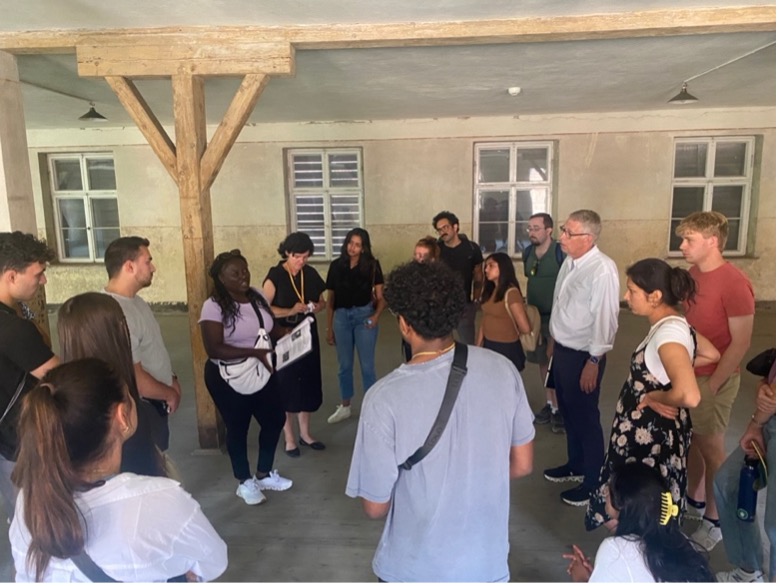
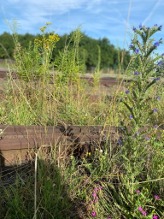 Violet wildflowers bloom
Violet wildflowers bloom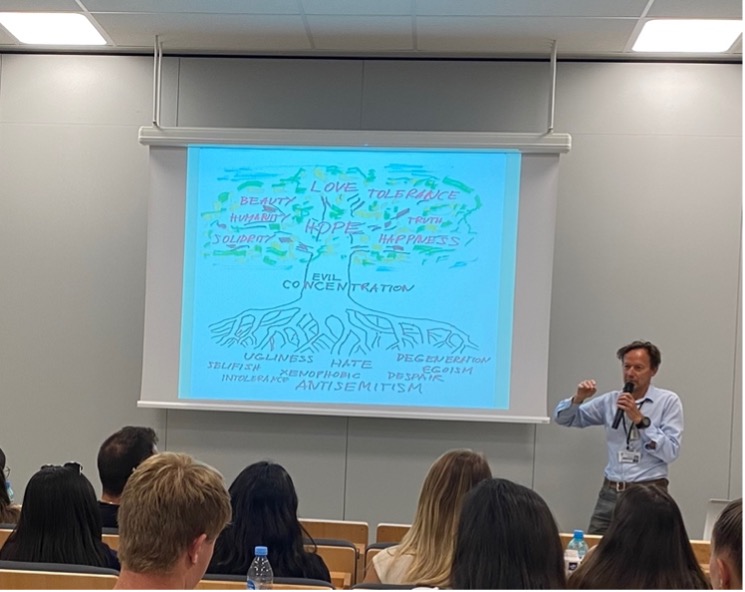
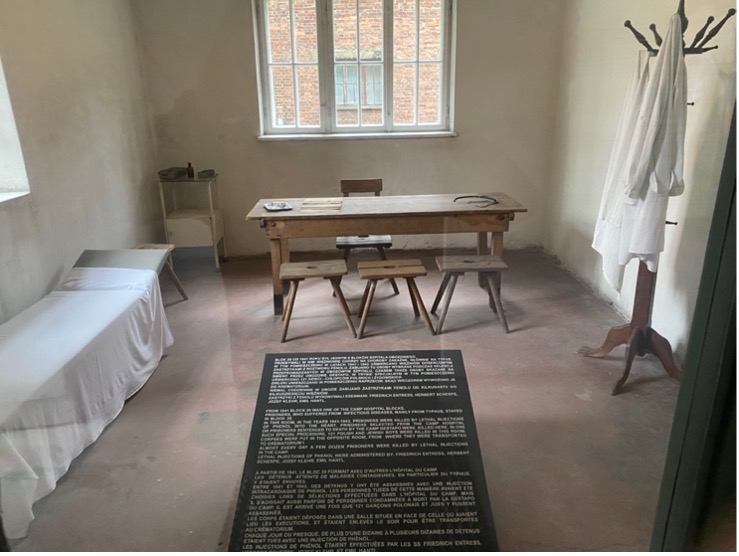
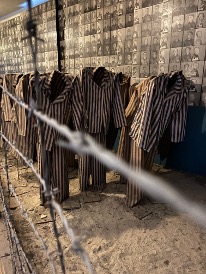
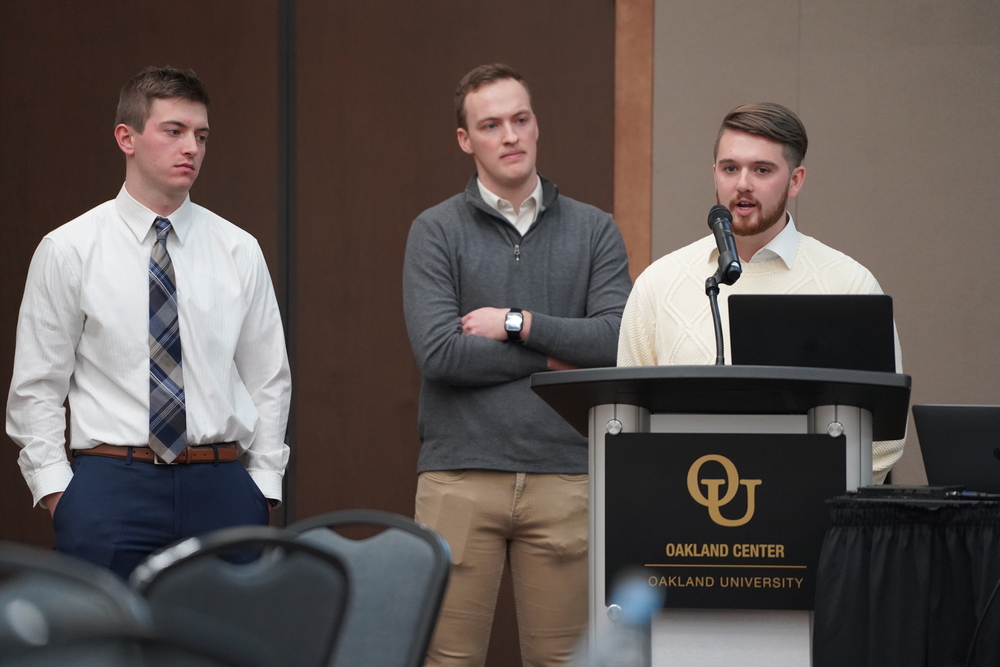
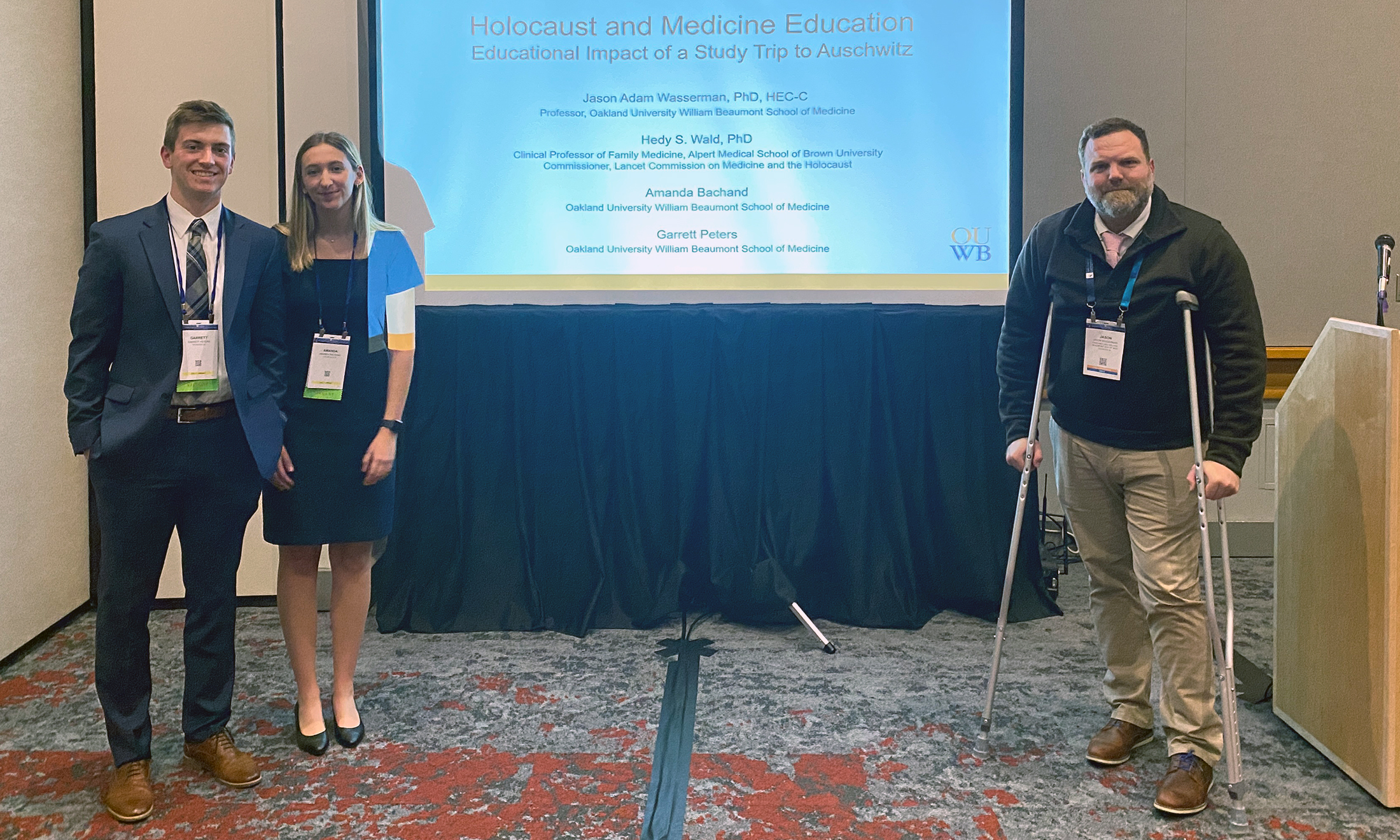 ‘Incredible opportunity and experience’
‘Incredible opportunity and experience’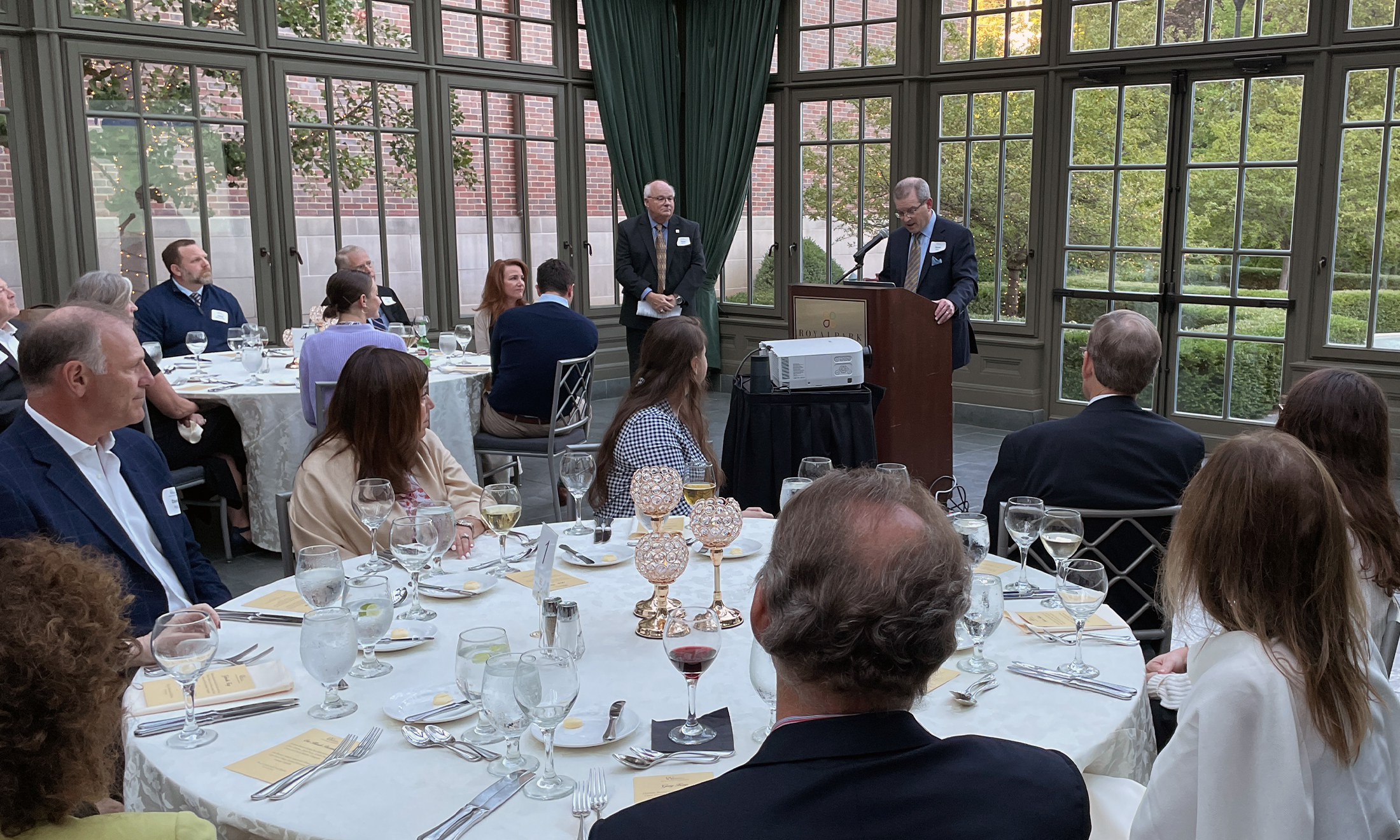 ‘Honored and proud’
‘Honored and proud’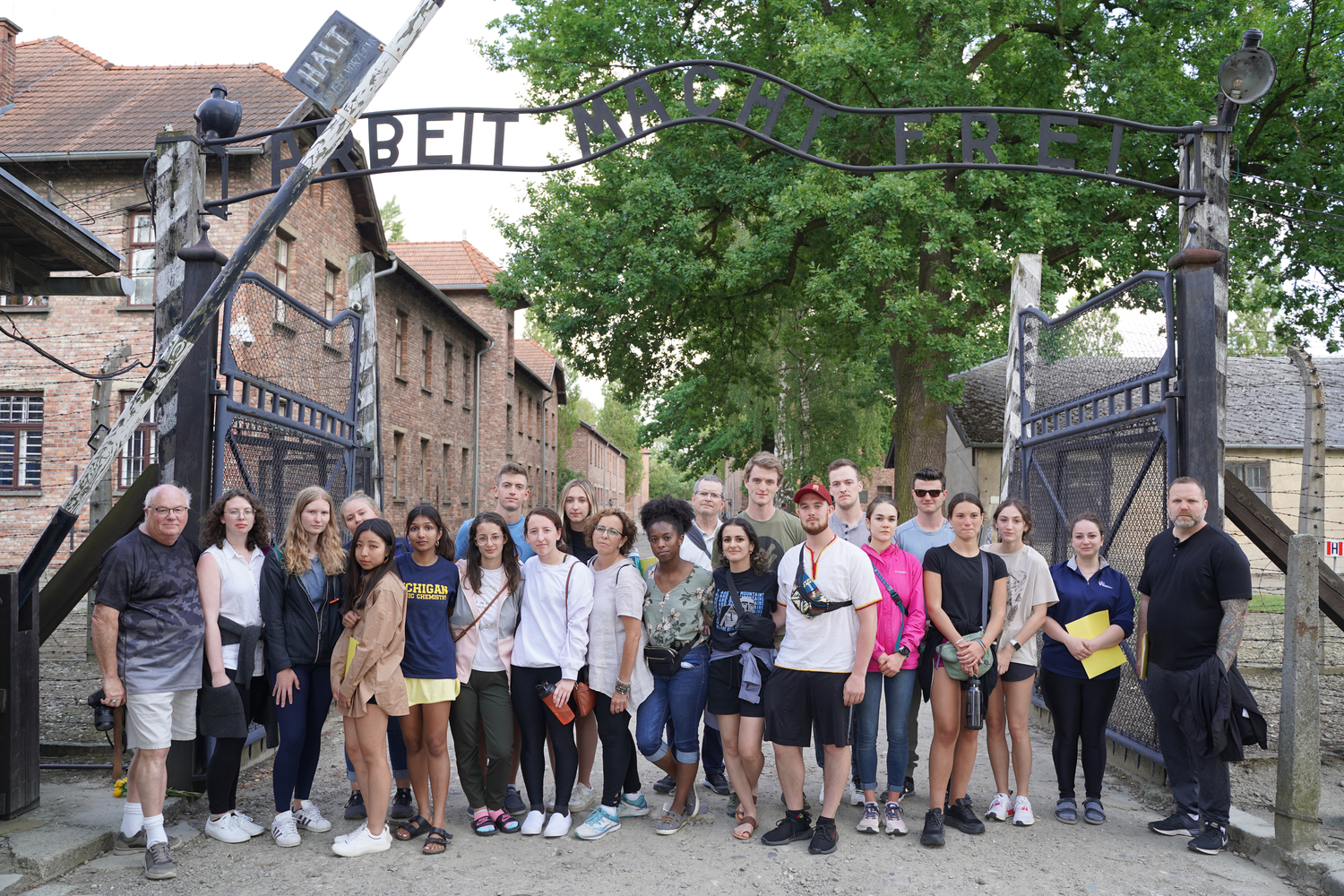
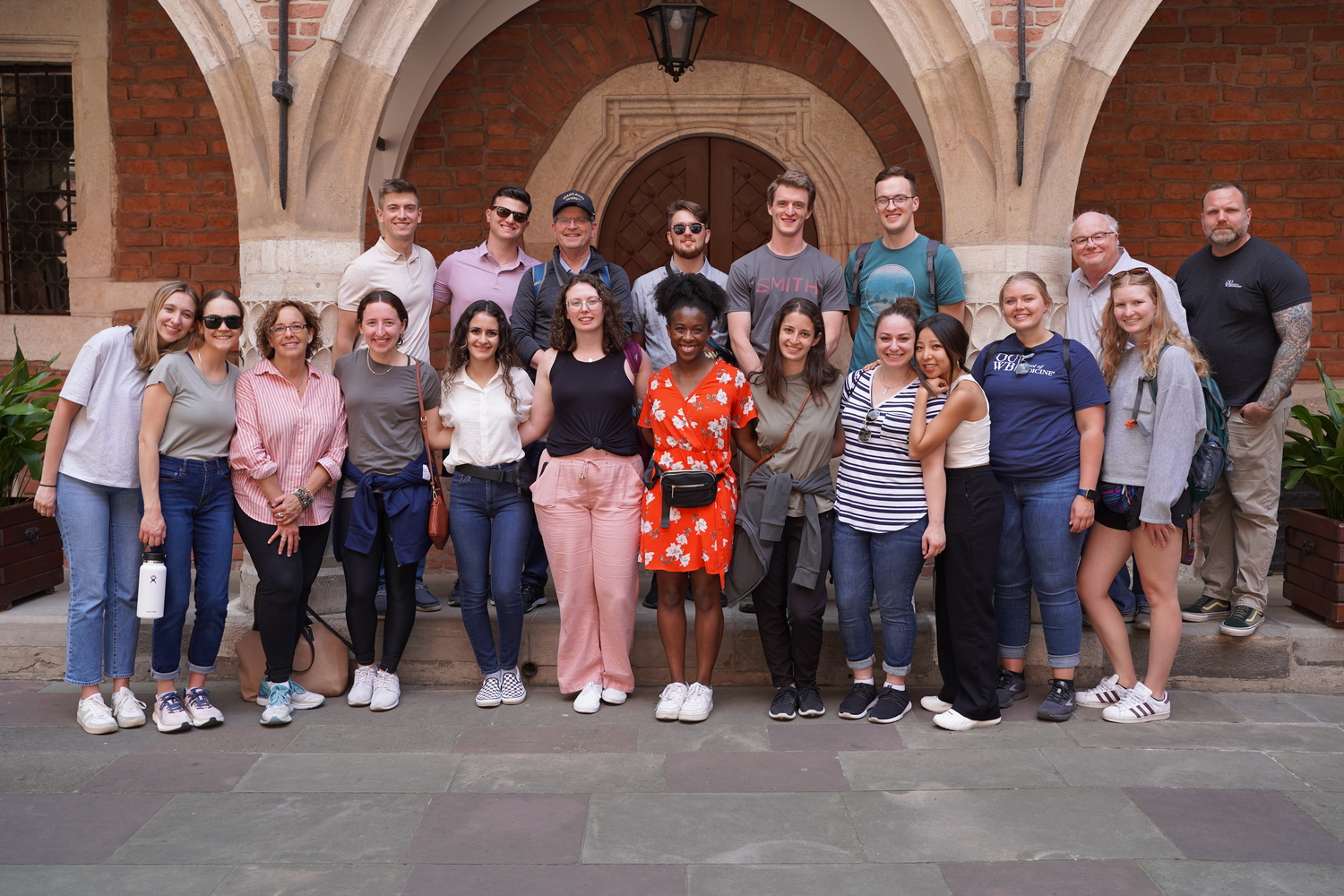
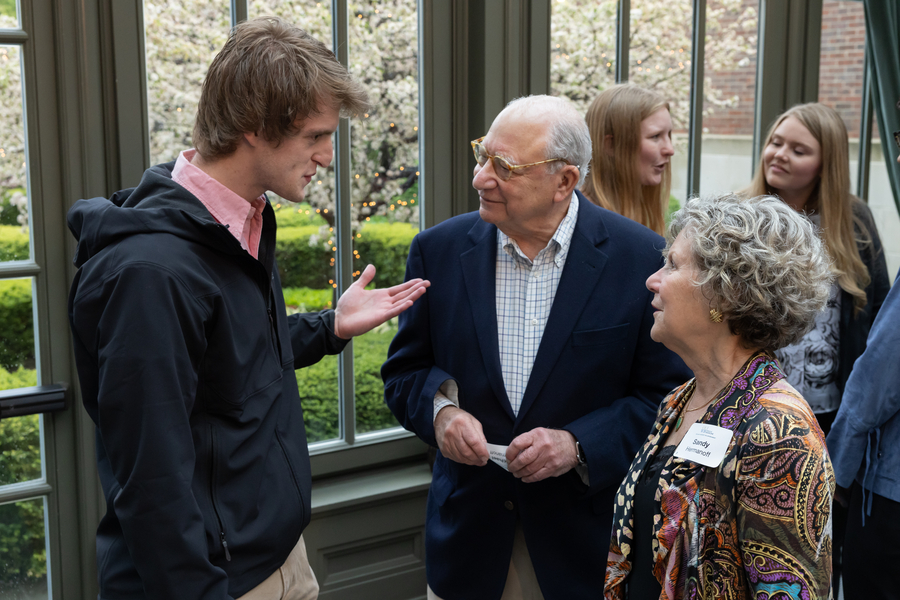
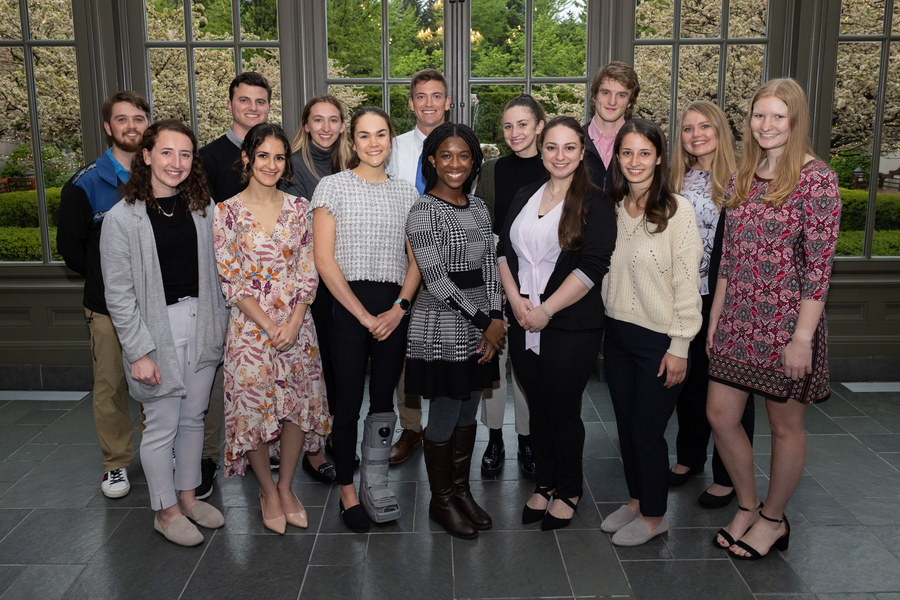 Destination Poland: Students to study abroad via OUWB Holocaust and Medicine program
Destination Poland: Students to study abroad via OUWB Holocaust and Medicine program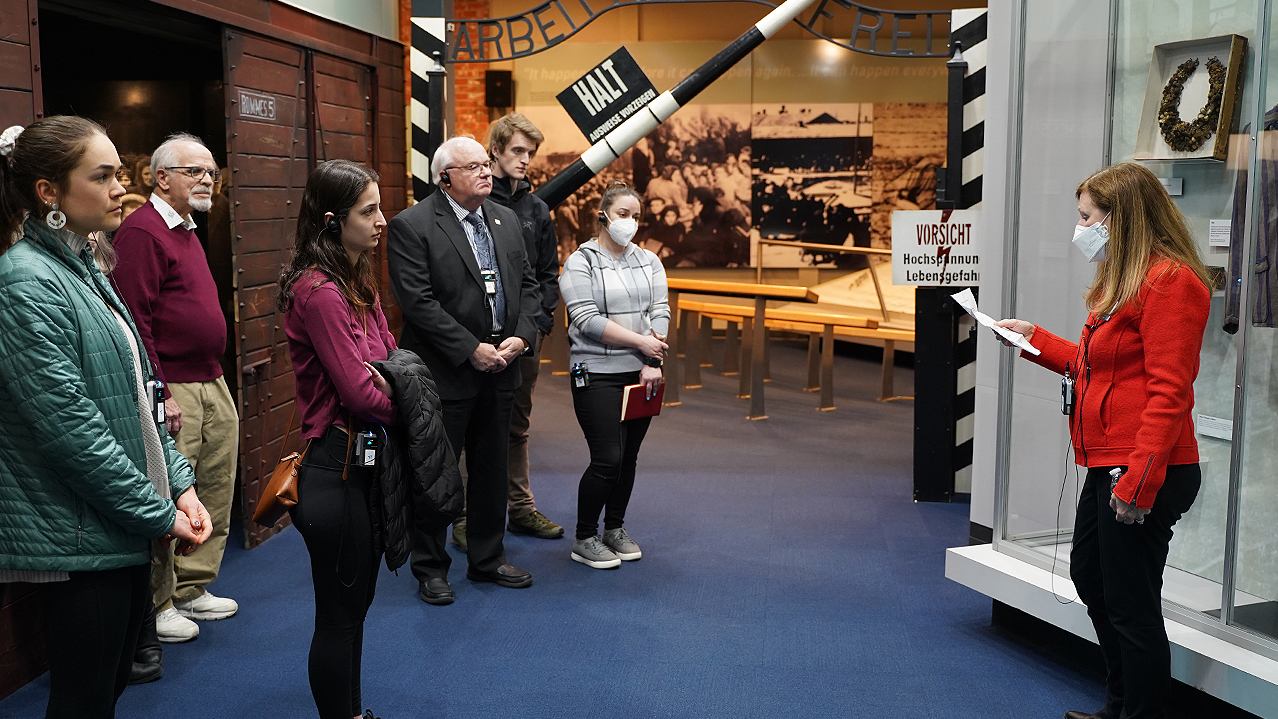 Med students visit local Holocaust center, continue prep for OUWB Study Trip to Auschwitz
Med students visit local Holocaust center, continue prep for OUWB Study Trip to Auschwitz